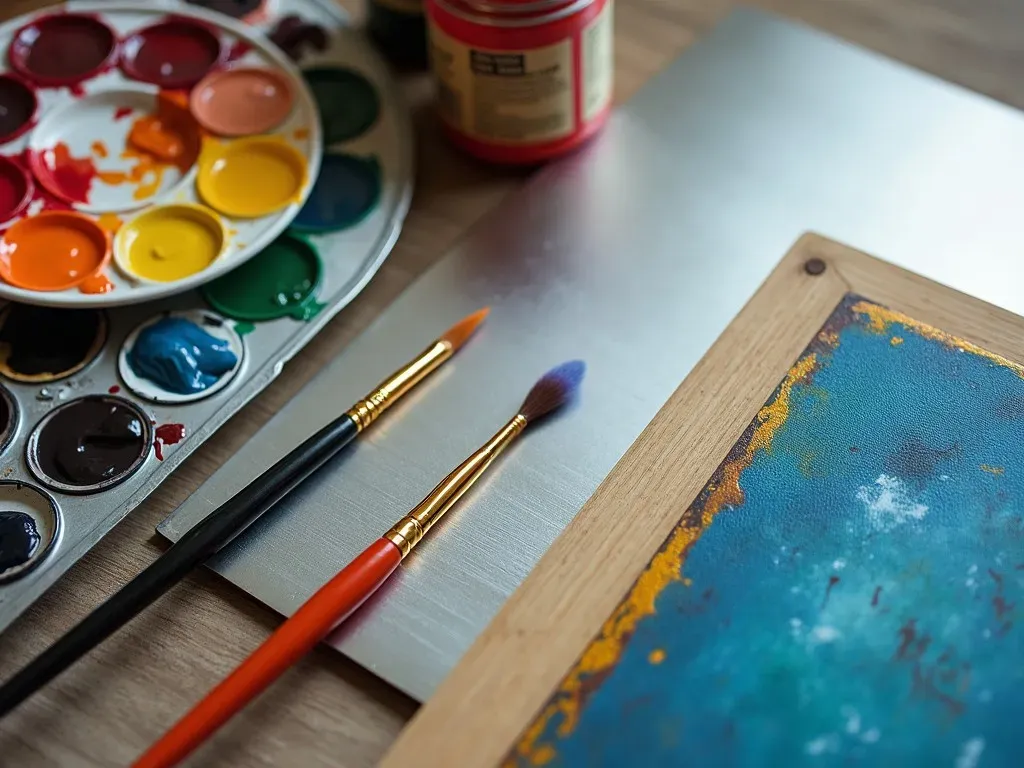When it comes to oil painting, choosing the right surface is crucial for achieving the desired artistic effect. So, which is the best surface for oil paints? The answer varies depending on your painting style, budget, and personal preferences. Here’s a comprehensive guide that explores the different options available for oil painting surfaces, highlighting their pros and cons to help you find the perfect foundation for your artwork.
Understanding Oil Painting Surfaces
Oil paints adhere well to various surfaces, including canvas, wood panels, and paper. The choice of surface affects not just the final look but also how the paint interacts with the medium. Common surfaces used for oil painting include:
- Canvas (stretched and primed)
- Wood panels
- MDF (medium density fiberboard)
- Paper
- Canvas boards
- Metal
- Glass and plastic
Each of these surfaces offers a unique texture and feel, making them suitable for different painting styles and Techniques.
Pros and Cons of Popular Oil Painting Surfaces
| Surface Type | Pros | Cons |
|---|---|---|
| Canvas | Lightweight, flexible, widely available | Can warp over time, may require priming |
| Wood Panels | Rigid, less prone to warping, absorbs less paint | Heavier, typically more expensive |
| MDF | Affordable, smooth surface, doesn’t warp | More absorbent, may require sealing before use |
| Paper | Convenient, budget-friendly, portable | Less durable, can buckle with heavy paint applications |
| Canvas Boards | Convenient, affordable, easy to store | May lack the flexibility of stretched canvas |
| Metal | Unique texture, durable, enhances certain styles | Requires special preparation, can be costly |
| Glass/Plastic | Extremely smooth, great for specific techniques | Requires careful handling, can be slippery |
Popular Options: Exploring Each Surface Type
1. Canvas
Canvas is perhaps the most popular surface for oil painters. Both cotton and linen canvases are available, with linen often preferred for its durability and texture.
- Cotton Canvas: Generally more affordable and readily available, making it ideal for beginners.
- Linen Canvas: A high-quality option that’s more durable and has a finer texture, preferred by professional artists.
Prep Tip: Always ensure your canvas is properly primed to prevent oil from seeping into the fibers, which can lead to deterioration over time.
2. Wood Panels
Wood panels offer a rigid surface that can handle heavy layers of paint. They are particularly favored for detailed work.
Advantages:
- Less warping compared to canvas.
- Suitable for both traditional oil painting and mixed media.
Preparation: It’s important to sand and seal your wooden surface with a primer suitable for oils to prevent absorption.
3. MDF (Medium Density Fiberboard)
MDF provides an affordable and smooth surface for painting.
Usage:
- Good for beginners who want to experiment.
- Supports a range of techniques due to its smooth texture.
Caution: MDF can absorb moisture, so always seal it before applying paint.
4. Paper
Specially designed oil painting paper is an emerging option that offers portability and convenience, especially for studies and quick sketches.
Benefits:
- Lightweight and cost-effective.
- Available in various textures.
Limitation: Not as durable as other surfaces; heavy applications might cause buckling.
5. Metal
Metal surfaces can create striking artworks with their reflective quality. However, they often require additional preparation.
Surface Preparation:
- Must be sanded and primed properly to ensure adherence.
Factors to Consider When Choosing an Oil Painting Surface
When selecting the best surface for your oil paintings, consider the following factors:
- Painting Techniques: Certain techniques may work better with specific textures (e.g., thick impasto works well on canvas, while smooth glazes benefit from wood panels).
- Budget: Your budget will influence the materials you can purchase. For instance, canvas is typically more affordable than a high-quality wood panel.
- Portability: If you are a plein air painter, lightweight options like canvas boards or paper may be preferable.
- Durability: Consider how long you want your artwork to last; wood panels can offer longevity compared to paper.
FAQs About Oil Painting Surfaces
Q1: Can I paint oil on any surface?
A1: While oil paints adhere to various surfaces, not every surface is recommended. It’s best to use primed materials specifically designed for oil paint.
Q2: What is the best budget option for beginners?
A2: Cotton canvas or oil painting paper is a great choice for beginners due to their affordability and accessibility.
Q3: How do I prepare my surface for oil painting?
A3: Ensure the surface is clean and dry. Use a primer (for wood and canvas) to prevent oil absorption, and let it dry before beginning your painting.
Q4: Is there a preferred surface for detailed work?
A4: Wood panels are often preferred for detailed work because of their rigidity and smooth texture.
Q5: How does the surface affect drying time?
A5: The drying time can be influenced by the surface type, with absorbent surfaces like paper slowing down the drying process compared to less absorbent ones like primed canvas.
Conclusion
Choosing the best surface for oil paints is essential for achieving the desired outcome in your artwork. As you delve deeper into the world of oil painting, consider experimenting with various surfaces to discover what resonates with your artistic style. Each option offers unique possibilities that can enhance your creative expression. For more information on oil painting surfaces, visit ArtWeb.
